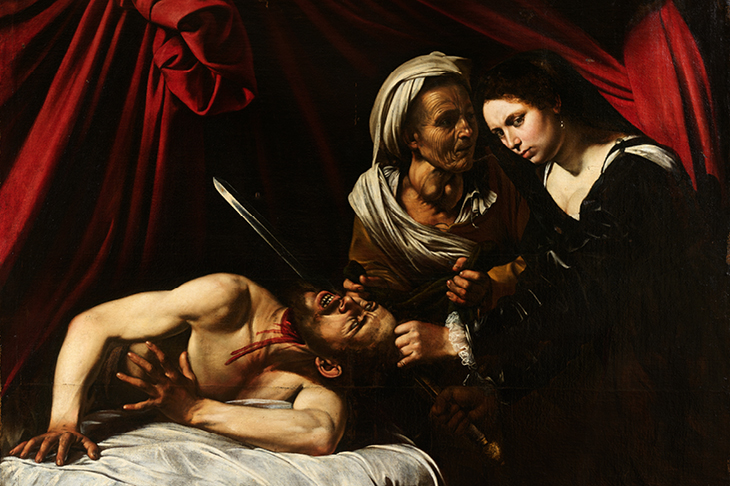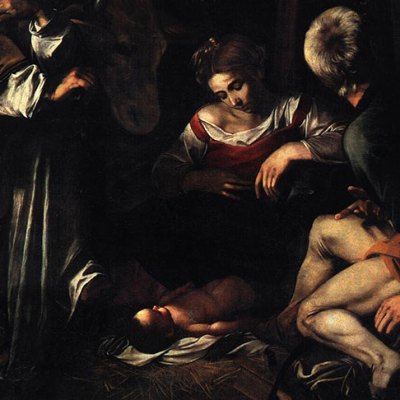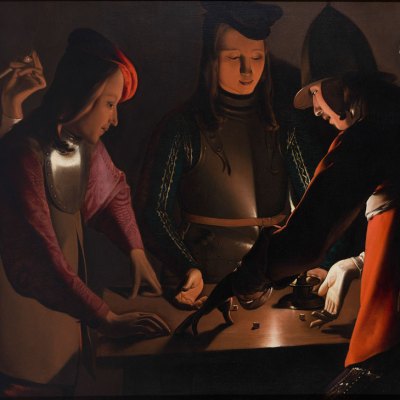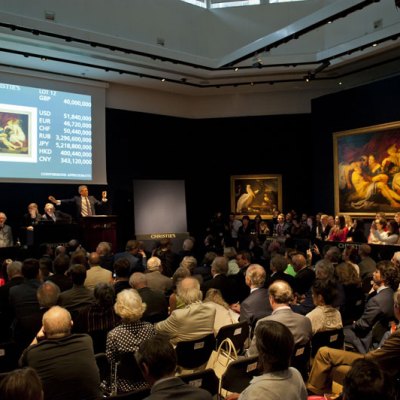There is very rarely conclusive proof – and never consensus – over the attribution of any newly discovered Old Master painting, drawing or sculpture. When that discovery is claimed to be the work of one of the very greatest of all masters in the history of western art, with an estimated value of €100m–€150m, the level of interest and heated debate intensifies – as the Salvator Mundi sold as a Leonardo da Vinci at Christie’s New York in 2017 illustrated so vividly. Now the critical spotlight has turned to the Judith and Holofernes discovered in an attic in Toulouse in 2014 and on view in London until 9 March, which has been hailed as a ‘lost’ late and revolutionary work by the brilliant and hugely influential Lombard painter known as Caravaggio (1571–1610).
This is a second, more menacing and psychologically charged reworking of the painting of around 1600 that is in the Palazzo Barberini in Rome, depicting the Old Testament heroine Judith in the grisly act of decapitating the Assyrian general Holofernes. Perhaps the first thing to say about the new painting is that its attribution to Caravaggio is, highly unusually, supported by documentary evidence as well as technical analysis. In brief, we know that Caravaggio made such a painting in Naples – he had fled there from Rome in 1606 after killing a man in a fight – and that the canvas was taken to the Netherlands by the artist and dealer Louis Finson (d. 1617). A painting of the same subject, believed to be by Finson, has long been assumed to be a faithful copy of Caravaggio’s lost original.
That the Toulouse painting is the primary version of this composition is clear from infra-red reflectography which has revealed numerous pentimenti, changes to the composition made during its creation. There would be no reason for a copyist to make such changes. These below-the-surface images also suggest the speed at which the composition was laid out and executed (Caravaggio was a famously fast worker who ‘drew’ directly on to a canvas with a brush). It seems stylistically self-evident that the two canvases were not executed by the same hand, although some believe this to be the case.
‘It is for art historians to decide who painted this picture,’ insists Éric Turquin, the expert who was called in by the Toulouse auctioneer Marc Labarbe after he found the painting in a client’s old family house. In the run-up to the auction on 27 June, the two are ensuring that as many scholars as possible have the opportunity of seeing the painting. The sale strategy they have adopted is sensible as well as straightforward and refreshing. That such a traditional approach seems remarkable is a sad indictment of the smoke-and-mirrors of the current art market, where business at the top end is rarely exactly as it seems.
‘For 18 months we kept the painting a secret while we carried out our research, showing it very quietly to art historians and restorers,’ Turquin explains. The French Ministry of Culture classified it as a National Treasure and placed a temporary export stop on the painting. As soon as an export licence was granted – there are three Caravaggios in the Louvre and two more in the provinces – the painting had a light clean to remove disfiguring yellowed varnish, then spent two months in the Pinoteca di Brera in Milan, alongside the Caravaggio Supper at Emmaus of about the same date (1606), the copy believed to be Finson and other works by the artist lent by French museums, so that art historians could compare and contrast and debate. Although many eminent authorities on the artist’s work have blessed the painting, Turquin, was candid when asked about the unconvinced, and mentioned two – one of them the grande dame of Caravaggio studies, Mina Gregori, who has just turned 95.
After the London view at St James’s dealers Colnaghi, which has seen throngs of visitors – layman and expert – the painting will go on public display in New York and Paris (venues and dates to be announced). Unlike the viewings of the Salvator Mundi, there have been no cameras recording a celebrity-dotted and ecstatic public reaction to the picture, nor will it be theatrically unveiled to screams and a barrage of camera flashlights in Hong Kong. ‘Although we have been criticised for not taking the painting to Sotheby’s or Christie’s to sell, we are offering it in Toulouse with the auctioneer who found it,’ Turquin says. ‘Not only is it an authentic picture but also the sale will be authentic. The painting has not been sold on, there is no guarantee and there is no reserve. No tricks. We want to sell it to a real client, who will understand it and love it. It will probably be a museum.’
As to the question of who else could have executed such a painting, Turquin says that no one has yet come up with a plausible alternative. He roundly rejects the suggestion of Artemisia Gentileschi, and he good-naturedly counters any suggestion that there are weak passages in this painting. ‘This is not just a new Caravaggio, it is a major and revolutionary Caravaggio. You have to remember that he was working in isolation: he was the only great artist in Naples at the time. He is getting bolder and bolder as an artist and developing an extraordinary technique. The brushstrokes here are up to 80cm long, and he is using the dark earth of the reserve or ground to provide the modelling of the white sheet and even the dark line of shade on Judith’s chin. This is a new style of working, which is why it is so hard to recognise the painting as a Caravaggio. This picture is a lesson in humility to us all.’
Judith and Holofernes will be on display at Colnaghi, 26 Bury Street, St James’s, London SW1, on Friday 8 March until 6pm and Saturday 9 March, 11am–6pm.



